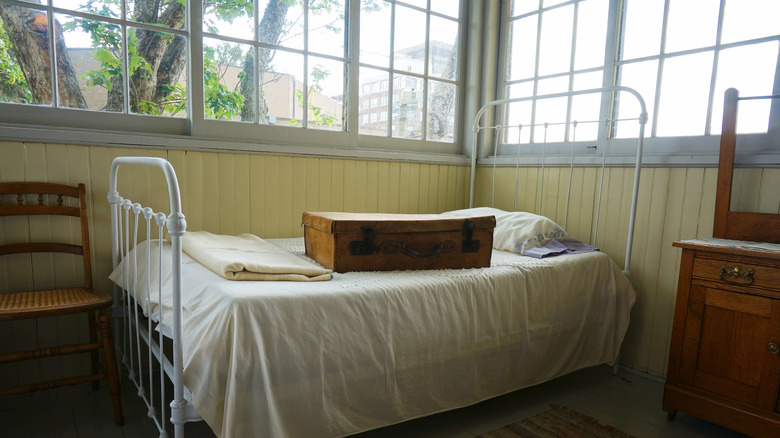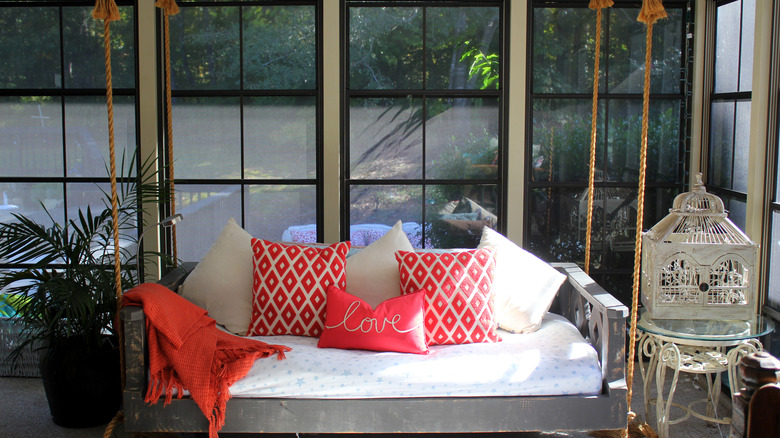What Is A Sleeping Porch And How Can You Create One For Summer?
Summer in many parts of the country can be hot, bright, and scorching during the day and swelteringly humid even at night. In the decades before electric fans and air conditioning were an option, many homes featured sleeping porches. These were outdoor living areas, usually located on the second or third floor, designed for slumbering in the breeze to the sound of crickets and other nighttime wildlife.
Porches spanned the exterior of the home's upper floors on multiple sides and featured screens and sometimes glass, though others were open and used netting or canopies. They typically included a comfy, soft surface like a full bed or daybed for sleeping with some protection from the elements and pests like mosquitos and flies. The charm of sleeping outside, whatever the weather, can make these sorts of spaces a great addition to your home. It may be easier than you think to turn any outdoor space, like a balcony or deck, into the sleeping porch-inspired space of your dreams with a few key adjustments.
Creating a sleeping porch
If you are looking for a way to enjoy this lovely, but often forgotten, concept in your own home, you can turn an outdoor living space into a spot for sleeping at night or idle naps during long summer days. A sleeping porch is also great for creating extra accommodations for summertime visitors. Pick out the best bed for your sleeping porch, be it a traditional one, a convertible sleeper, a daybed, a hammock, or a porch swing that doubles as a suspended bed. You can even DIY a cozy spot by turning an inexpensive IKEA bed into an adorable swing. Open porches and balconies can be outfitted for sleeping with some mosquito netting around the bed or removable mesh screens that pull down like shades when needed.
If you are building a sleeping porch from scratch, consider adding closeable windows or shutters. This can increase the amount of time that you can use it during spring or fall and help keep out rain and moisture. Also, consider factors like optimal breezes, sunlight, and tree shade when deciding where you place it in your home. If you do not have room for an attached sleeping porch, you can also use a space like an open gazebo or shelter on your property by screening it in.
How to customize your sleeping porch
Typically accessible by a window or door from the inside, many porches feature privacy tactics like shutters, curtains, and shades to block views from surrounding homes and unwanted sunlight during the day. Add some curtains or simple bamboo shades to openings, or if there is glass, try installing some peel-and-stick window film. Other great ways to create a cozy sleeping porch include adding plants or extra seating like a comfy reading chair or a stash of books. You can also use a rug for extra softness in the space.
While sleeping porches were usually pretty simple in their design, often without much room for anything besides the bed, there are definitely some elements that can make your space more inviting and cozy, including soft lighting. Opt for a small lamp on a slender bedside table or ledge, wall sconces, or a simple standing lamp. Or, use string lights, paper lanterns, or outdoor strands of bulbs. If you do not have an electrical outlet in the space, you can use battery-powered LED bulbs or votives to create cozy lighting.


